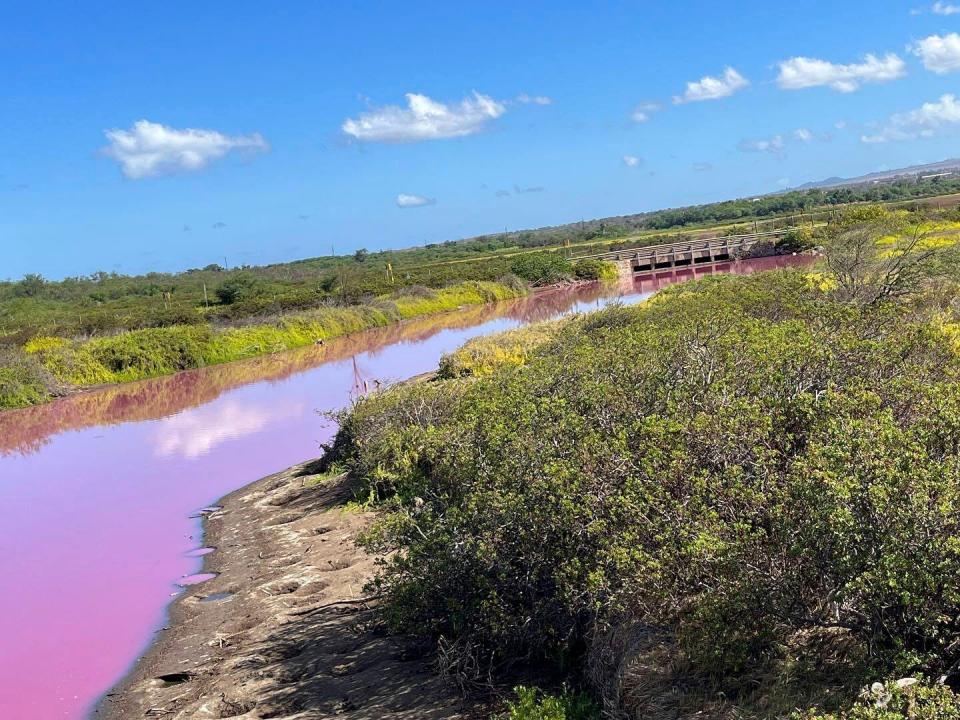A Hawaii refuge pond has turned eye-catching pink and scientists think they know why
When a pond within a Hawaiian wildlife refuge unexpectedly turned bright pink late in October, word soon spread and visitors began amassing on its shores to glimpse its stunning hue.
Sights of the bubble gum-pink pond sparked a social media fervor of marveling nature enthusiasts. But as eye-catching as the pond might be, staff at the Kealia Pond National Wildlife Refuge in Maui say the spectacle is likely nothing to celebrate.
Maui's drought may be contributing to the situation, which scientists believe is likely the result of “halobacteria” thriving on water with unusually high salt levels, according to the refuge. Staff at the Maui refuge have been monitoring the pink coastal pond since Oct. 30 and are warning visitors against entering the water, drinking it or eating fish caught in it.
Flag redesign: See submissions for Minnesota's state flag
What is Keālia Pond?

Established in 1991, the refuge encompasses approximately 700 acres and is one of the few natural wetlands remaining in the Hawaiian Islands.
Managed by the U.S. Fish and Wildlife Service, the refuge mainly exists to protect the wetland habitat of two endangered wetland birds - the Hawaiian coot and Hawaiian stilt, according to its website. However, the park serves as a sanctuary for a variety of migratory birds from as far away as Alaska and Canada who come to nest, feed and rest in the warmer months.
The pond itself is a natural basin for a 56-square mile watershed from the West Maui Mountains.
Snake wrangling: Burmese python weighing 198 pounds is captured in Florida
What is causing the pink water?
Refuge staff at first suspected toxic algae may be the culprit behind the pink hue that has overtaken the pond.
But that suspicion was soon ruled out after water samples were sent to the University of Hawaii for analysis.
Instead, scientists believe that the pink color is the result of a single-celled organism called halobacteria, which are salt-loving organisms that thrive in bodies of water with a high salinity. At the time that the samples were studied, the salinity in the Keālia Pond outlet was measuring at greater than 70 part per thousand, which is twice the salinity of seawater.
Further analysis will allow the refuge to determine the exact strain of the halobacteria organism.
Because of the ongoing drought in Maui, officials at the refuge believe that the Waikapu Stream that has not been feeding into Kealia Pond and raising its water levels, Bret Wolfe, the refuge manager, told the Associated Press. But the pink coloration should be washed away during the next heavy rain that reduces the salinity, Wolfe said.
Contributing: The Associated Press
Eric Lagatta covers breaking and trending news for USA TODAY. Reach him at elagatta@gannett.com
This article originally appeared on USA TODAY: Pink water in Maui pond is eye-catching, but drought may be to blame

